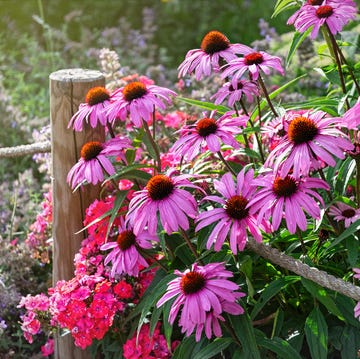Many people think of spring as the best time to plant vegetables, but if you ask rooftop gardener James Mastaler, fall is actually the perfect time to start! “Fall is a surprisingly wonderful time to grow food,” says Mastaler, the founder & CEO of Pistils & Pollen. “In my experience, many garden plants seem to thrive in cooler temperatures—especially leafy greens and root vegetables.” Plus, without the blazing sun and pesky summer bugs buzzing around, fall gardening just feels a little easier—especially if you’re new to growing your own food. “The slower pace of growth can also make fall gardening feel a bit more forgiving, especially for beginners,” Mastaler adds.
So, when should you start planting your vegetable garden? Mastaler recommends thinking ahead. “Here in Chicago, I start seeds in mid-to-late summer, around early August, depending on the crop,” he explains. Counting backward from your area’s first frost date will help ensure plants have enough time to mature. But don’t worry if you’re a little late—many greens and radishes can still be planted well into September. In fact, root crops and greens taste even better after a light frost, and some quick-maturing herbs like parsley and cilantro do best in fall, when they’re less likely to bolt.
Once you’ve got the timing down, the fun part is choosing what to grow! From leafy greens to root veggies, these fall-friendly vegetables and herbs will fit right into your garden—no matter the layout.
Kale
A hardy green that thrives in cool weather, kale actually sweetens after a light frost. Plant it in raised beds or containers for cut-and-come-again harvests.
Swiss Chard
Colorful stems make this leafy green as pretty as it is tasty. Chard tolerates light frost and can keep producing well into fall.
Arugula
This peppery green matures quickly, often in just 30 days. Sow seeds every couple of weeks for a steady supply.
Mustard Greens
Bold and spicy, mustard greens are another fast-growing crop. They’re especially suited for cooler temperatures, which mellow their flavor.
Spinach
Spinach loves chilly weather and often grows sweeter in the cold. Plant now for salads and sautés through the fall.
Lettuce
Loose-leaf and butterhead varieties are perfect for fall succession planting. Harvest baby leaves early or let them grow to full heads.
Radishes
One of the quickest crops you can grow, radishes are ready in as little as three weeks. Plant in succession for a continuous harvest.
Beets
Beets offer both tasty roots and nutrient-rich greens. They tolerate frost well and develop deeper flavor in cooler weather.
Carrots
Carrots thrive in the fall and become sweeter after a frost. Loose soil in raised beds helps them grow long and straight.
Turnips
Both the roots and greens of turnips are edible. They grow quickly, making them a great choice for short fall seasons.
Cabbage
This cool-weather favorite can withstand light frosts and even improve in flavor. Choose compact varieties for smaller spaces.
Broccoli
Broccoli appreciates cooler temperatures and produces tightly packed heads in the fall. Side shoots often continue after the main harvest.
Cauliflower
A bit fussier than broccoli, cauliflower prefers steady, cool conditions. Protect it from warm snaps with light shade if needed.
Cilantro
This herb bolts quickly in summer but thrives in fall. Perfect for garnishing soups, tacos, or roasted veggies.
Parsley
Slow-growing but reliable, parsley loves the cooler months. Plant it now for a fresh garnish that can last until frost.

Tierney McAfee is a freelance writer and Country Living and The Pioneer Woman contributor who covers entertainment, holiday & entertaining, food & drinks, design ideas, DIY, and more.




























